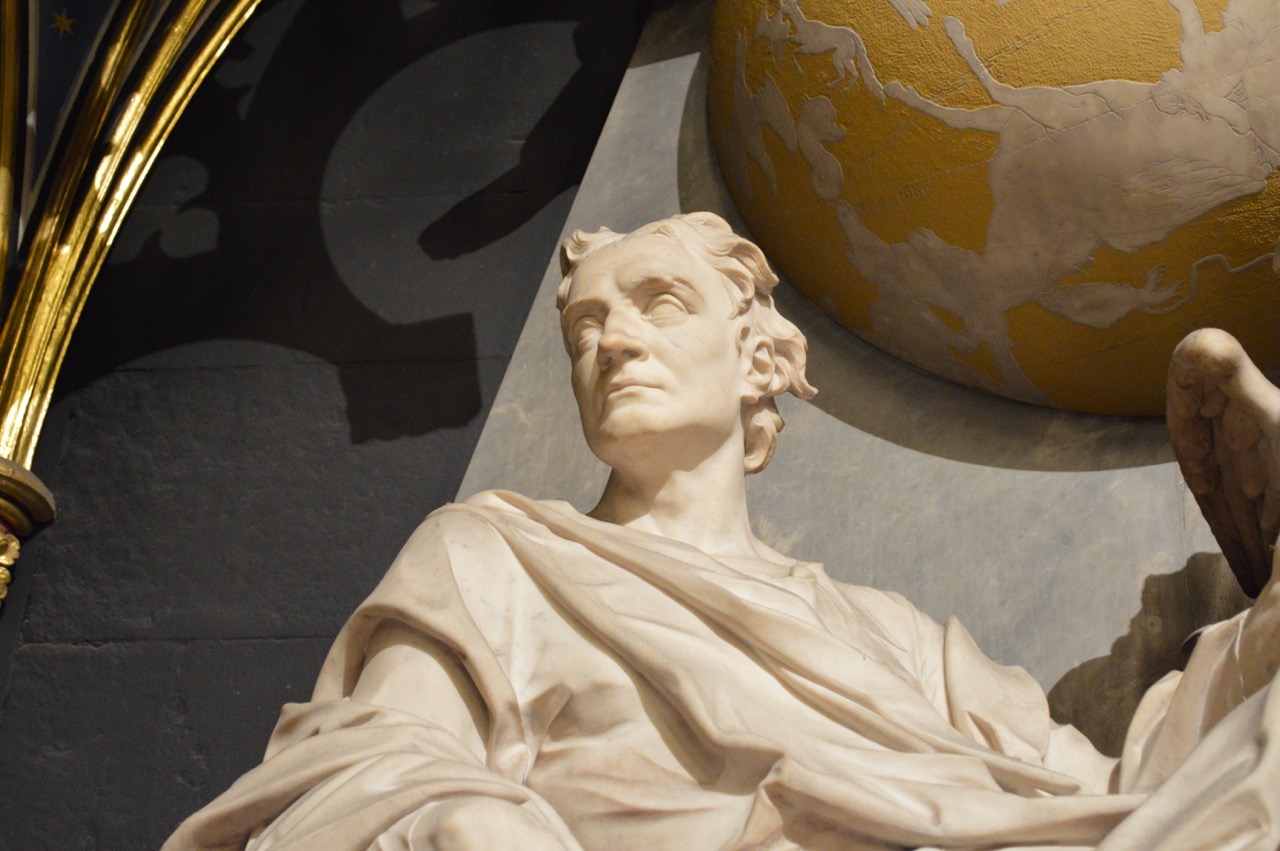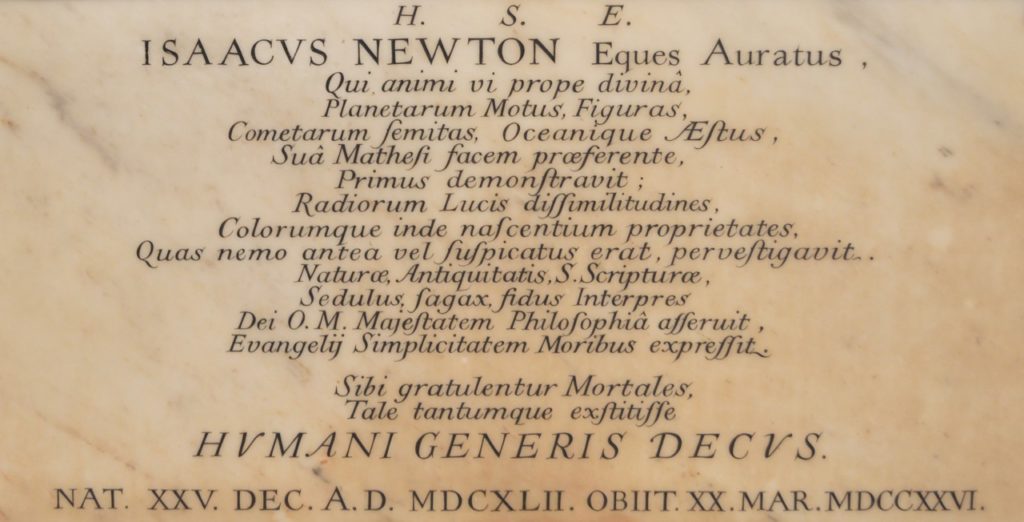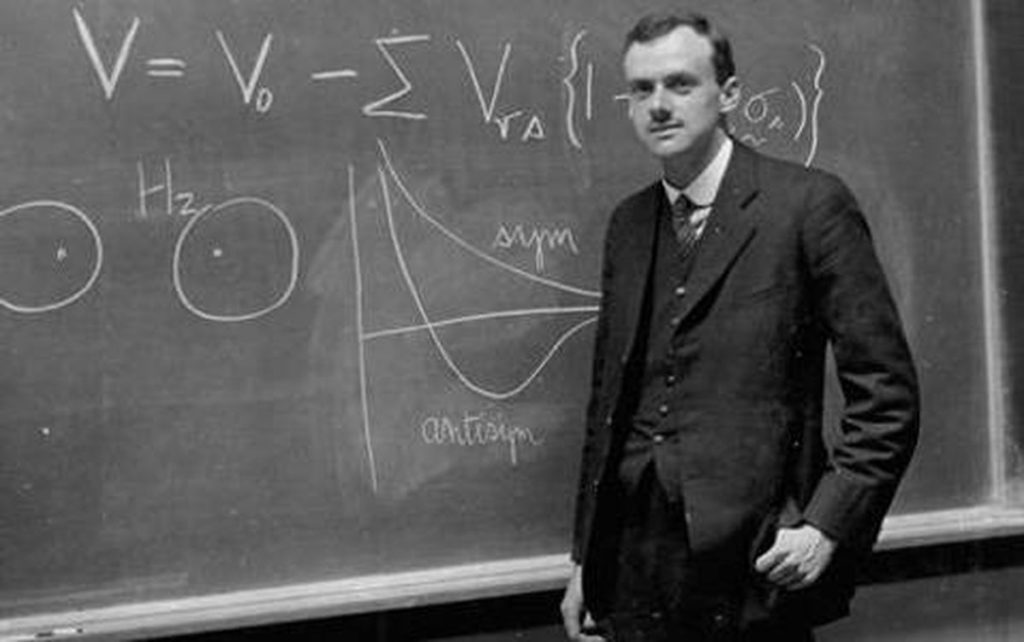
You’ve almost certainly heard of Poets’ Corner, the spot within Westminster Abbey given over to the commemoration of the nation’s authors, poets and playwrights. Amongst dozens of others you’ll find Chaucer’s tomb, plaques to Edward Lear, Wordsworth, D H Lawrence and the Bronte sisters, the graves of Dickens and Browning, a statue of Shakespeare and the bust of Longfellow, windows to the memory of Marlowe, Oscar Wilde and Mrs Gaskell.
But it’s not the only such grouping within the Abbey. There’s ‘musicians’ aisle’, the ‘statesmen’s aisle’ and, in front of the choir screen that divides the nave, ‘scientists’ corner’.
This is the group of graves and memorials centred on the grave and commemorative statue to Sir Isaac Newton (1643-1727), the eminent scientist of the period. Responsible for advances in mathematics, optics, physics, astronomy; deviser of calculus, laws of motion and gravitational theory, he is one of the towering figures of science. “Hic depositum est, quod mortale fuit Isaaci Newtoni” says the epitaph on the grey marble slab that covers him: “here lies what was mortal of Isaac Newton”. The English translation is repeated on the nearby memorial stone to Stephen Hawking, a successor to Newton as Lucasian Professor of Mathematics at Cambridge University. Hawking’s ashes were interred in the Abbey in 2018.

Close by is the grave of Charles Darwin, author of “On the Origin of Species”. His theory of evolution reordered humankind’s position in the natural world, a scientific principle that blew away the notion of a divine creator of humanity and met considerable opposition from the church (the Church of England formally apologised for its initial hostile stance in 2008, 200 years after Darwin’s birth.) Darwin was denied a knighthood in part because of the church’s antipathy, but his work was recognised as so important that he became one of only five non-royal individuals to be buried in the Abbey in the 19th century.
And just by Darwin’s grave is a memorial stone to Howard Florey. It is Alexander Fleming who gets the credit for discovering penicillin, but Florey (and his colleague Ernst Chain) came up with the way of turning this random discovery into a usable drug. As such his work is responsible for saving the lives of countless millions. (All three shared the Nobel Prize for medicine in 1945.)
Around Newton are a collection of memorials to physicists – James Clerk-Maxwell, Michael Faraday, Ernest Rutherford and William Thomson, 1st Baron Kelvin – but my personal favourite has to be that to Paul Dirac. He is relatively unknown, but regarded by many as the second most important physicist of the 20th century after Einstein (and who was, Like Newton and Hawking, also Lucasian Professor). Dirac shared the 1933 Nobel Prize for physics, predicted the existence of antimatter, and explored quantum theory.

But it’s the stories about Dirac that are so wonderful – that he turned down a knighthood as he didn’t want to be addressed by his students by his first name (he later became a member of the Order of Merit). Or that he was so legendarily taciturn that his colleagues at Cambridge coined a unit of measure called “the dirac” – which meant one word per hour.
Hawking’s memorial and the interment of his ashes shows that the process of commemorating our most important scientists is still ongoing, so we shall see who will be the next to be recognised (and who might be the first woman to be given the honour).
To get more posts like this, sign up for my newsletter. Every month (or so) I’ll send you the latest from the site, and some of the most popular bits of the archive.

